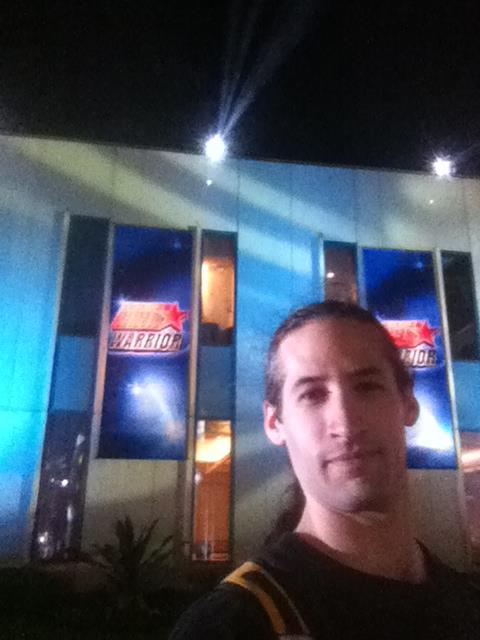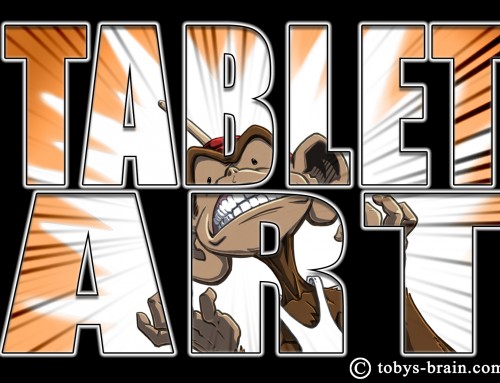With just a few days to spare, I continued my streak of entering the American Ninja Warrior contest, but I did it with mixed feelings. Change is an inevitable fact of life, a contest like American Ninja Warrior (ANW) is not immune. Fellow long-time fans of the show have seen the American version of the contest evolve over the last 17 seasons. Initially, a single competitor won a chance to compete on the original Japanese show, Sasuke. As the popularity of Sasuke and the ANW contest grew, NBC eventually launched their own show on US soil. It was fairly similar to the original, except for the addition of regional qualifying rounds. Over the years ANW has taken on a life of it’s own and spawned a few other, temporary shows (USA vs. The World, American Ninja Warrior Jr., and Team Ninja Warrior), as well as launched a ninja subculture of obstacle course-based ninja gyms and both local and national competitions. The main show itself began focusing more on competitor’s “stories” than Sasuke ever did, introduced new elements like the “safety passes”, and more recently head to head races and a somewhat cryptic posting about a new format for the show. It’s all interesting to a degree, but I can’t help shake the feeling that ANW just isn’t the show I fell in love with, and have dreamed about competing on, back in 1999.
Story time. I started training in Shotokan karate in 1995 as a freshman at The University of Massachusetts, Dartmouth. The college club belonged to a larger, intercollegiate organization called the New England Collegiate Karate Conference (or NECKC), headed up by Master Kazumi Tabata. One of my best friends from high school, Pete Riordan, also started karate at the same time, but at the club at Boston University. He made a friend in the club who was a Japanese exchange student, named Joji Takano. All the clubs came together each semester for promotions and tournaments, and we die-hards traveled to Boston during summer and winter break to train directly with Sensei Tabata, which is how I became friends with Joji as well.
In 1999, the heyday of our college karate days came to an end (though the training did not), and Joji returned to Japan. Pete stayed in touch with him, and one day received a VHS tape (remember those things?) of some Japanese tv programs from him. Pete brought it over to my house one evening and we sat and watched things we never would have been able to see in those days otherwise. I remember Iron Chef was on there, but the show that really captured my interest was the fourth Sasuke tournament, which was the first time anyone had completed all four stages of the course. I was almost a decade into being a hardcore workout nerd, and the challenge all those crazy obstacles presented excited me. The only real experience I had with obstacle courses at that point was getting to run through a course at an old military base during a scout camp out. I loved it, but “ninja gyms” just weren’t a thing back then, so I didn’t have the means to explore that interest further. The athletes on Sasuke were amazing, but so, too, were the “goofy” contestants who wore outlandish costumes or hyped up some peculiar aspect of their lives or personalities. It was just a fun, crazy show with some serious challenges and it was completely unlike anything I had ever seen before.
There were several unique things about Sasuke that I don’t think I fully appreciated until years later, but nevertheless were responsible for why I liked the show so much. As I said, there were the crazy competitors, the really amazing athletes, and the wild and difficult obstacles. But I think the two things that really made the show so impactful and so different were that the competitors weren’t competing against one another. It was each individual against the course, and in many ways against themselves. If they failed an obstacle, they would go home and train harder and try again the next year. There were many competitors who clearly had the physical abilities, but sometimes got taken out by the mental aspects, facing an obstacle that had taken out so many others or that they had failed on previously. I found it very similar to the journey of self-discovery and self-improvement in martial arts.
The other thing that was really unique was that if no one completed all four stages, there was no winner that year. That’s kind of an unheard of thing in the west. There were seasons of Sasuke where only one or two people made it to the third stage, and some where no one made it past stage two. I found that fascinating and compelling, and it’s one of the changes ANW made that I don’t care for. Apparently, the executives think the American audience can’t handle a competition with no winner, so they introduced other wins, like a monetary prize for making it up the “Mega Wall” or being the “last ninja standing”.
Anyway, after watching that VHS tape, I dreamed of traveling to Japan to compete on the show, but there was zero avenue for that happening at the time. It was a weird bit of luck that some kid in Massachusetts randomly saw the show from halfway around the world as it was. Eventually, the G4 TV channel started airing subtitled seasons of Sasuke, which I watched religiously and repeatedly. I started thinking about adapting the way I worked out so that I had the physical attributes to complete some of the obstacles. I dreamed about building a course on my almost 10 acre property. I even started dreaming up a business idea for obstacle course gyms…which I never pursued because I didn’t have the know-how, and I didn’t want to get locked into something as time-consuming as launching a whole new business and running a gym. At that time, I wasn’t spending any time in my studio making art, but I had plenty of ideas, goals, and dreams. Being an artist is much more central to who I am and where my biggest dreams are centered.
In 2007, G4 launched the first contest to send an American athlete to compete on Sasuke. I didn’t enter because the submission deadline coincided with the birth of our third son, but the following year, when they ran the contest again, I entered. I have entered every year since with one (or two?) exceptions due to injuries. In 2012, lightning struck.
It was the first year NBC got involved and held their own tournament in the US. They introduced the regional qualifying and regional finals rounds, with the national finals held in Vegas. I was nearly speechless when I got the phone call to go participate. In hindsight, the whole experience was great and I’m so glad to have been able to be a part of it, but I have a lot of mixed emotions around it. I had to fly down to Miami Florida, the Northeast and Southeast Regionals were being filmed at Florida International University. We had three young kids, and the flight plus a week at a hotel was not cheap, so I felt incredibly guilty about going (my amazing and always supportive parents helped pay for the travel). I chose not to rent a car to save some money, and I didn’t use the taxi services, either. I walked a few miles from my hotel to FIU, down a highway. That was probably the first of several mistakes that lead to a poor performance. That long trek on hard pavement carrying a backpack was not a great preparation, particularly when filming took place in the middle of the night. There were long waits between runs as they reset obstacles and cameras and the crew got ready for each competitor, so it was really tough to get warmed up at the right time. During one of my ill-timed warmups, I chose to move away from the crowd and practice a little kata, during which I tweaked one of my hips. I don’t know how much it affected my run, or if it was caused by that jarringly long walk to get there, but I do know it bothered me for a long time after that. They had a trampoline similar to the one on the actual course to try out, but there were a lot of people around it, so my introversion and self-consciousness took over and I didn’t get any practice on it. When my run finally happened, the first three obstacles felt like a breeze. I chose to give a loud “kiai” at the start of my run because I knew it would switch my brain into “karate mode” so I could focus and tamp down the nerves, and it appeared to be working. The fourth obstacle, the Jump Hang, required you to launch from a trampoline onto a hanging cargo net. I had watched hundreds of competitors get taken out by it on Sasuke over the years. I knew the proper technique: hit the trampoline with speed and jump up, not out. The combined momentum of running forward with jumping forward off the trampoline would be too much to hold on to the cargo net as your body swung through.
I ran at the trampoline without pausing, without walking up to it first to test it’s springiness. I launched out instead of up. My hands grabbed the net, my legs swung through, my fingers peeled off, and I hit the water. Several runs later, the crew did some maintenance on the trampoline, which a lot of runners seemed to have issues with. It’s possible there was something wrong with it during my run, but I’ll never know.
I took my failure pretty hard. I had hyped myself up for that moment for years, I definitely let myself down. I also felt like I let my family down, especially my wife and kids. My being away for the week as the stay-at-home dad, as well as the cost of it all, was a burden on the family, and it was a selfish thing I was pursuing. I still think about that. As I said, I have entered every year since then, and even though the odds of me getting a second chance are slim, I still feel a little guilty about it in the off chance it happens.
2023 was the first year I haven’t watched ANW. Once we ditched satellite tv (no cable service available in the boonies here), I had to watch it streaming via Hulu. Now NBC has it’s own streaming service and no longer has a deal with Hulu. ANW is the only show I would watch, so I can’t justify paying for another streaming service. I catch clips of runs and find out the results through both the show’s and some of the competitors’ social media. I think not being able to watch it so readily has given me more room to ponder what the show has become, and where it might be headed.
As I mentioned at the start, the show has evolved and become it’s own entity. But it’s no longer what I fell in love with over two decades ago, it’s not Sasuke. It has very different vibe overall, particularly with the focus on “emotional backstories”. The push for including head to head racing is interesting, and I could see that as fun and exciting to do as well as watch, but it’s not the individual vs the course, vs themselves, anymore. There was an interesting camaraderie that developed when it was everyone against “Mt. Midoriyama” (what the fourth stage was called on Sasuke) and not each other. It was compelling to watch someone fight through a particularly tough obstacle, overcome it, and just barely reach the buzzer. It was equally compelling to watch someone work so hard, overcome difficulty, and still come up short (again I draw parallels to martial arts). Anyone that finished the course under the time limit moved on. It meant a wider variety of athletes could tackle the course and find success. With races its about who’s faster, so even if you complete the course, you might not advance, and with the influx of amazing teenagers competing, the older, slower, methodical athletes won’t stand a chance.
After I finished filming all the clips for this year’s submission, I became aware online that there were changes afoot. The producers put out a statement about some changes to this upcoming season, focusing on the race format rather than the traditional four stages. I’m not going to lie, it took the wind out of my sails a bit. It made me reconsider whether or not I should finish editing my video and click “submit”. The notice mentions this is a “special season” in which they are trying to bring back some of the former competitors with this new format, but there have been mixed opinions about it online so far. It’s also unclear if the race format will be the new standard, or if this is truly a one time “special season” format, perhaps setting the stage to launch a new spin off, race-based show.
In the end, as you’ll notice from that picture waaaaaay back at the start of this rambling blog, I decided to enter again. I figure there’s very little chance I get selected again anyway, but if I do, I think my focus is a little different than it was when I first entered in 2008. Yes, I’m not getting any younger, but there are competitors in my age bracket and some much older. Yes, I want to “hit a buzzer” (or several), I’d love a crack at the national finals and stage 4 (depending on the future format of the show). I want a chance at redemption. But, bigger than that now, if I were able to get myself on tv, if I were able to have “my story” aired, I could potentially draw the attention of a large audience to Plunger Monkey and my art in general, which might give me a chance to fulfill a much older dream. It’s a long shot, but you miss 100% of the shots you don’t take, as the saying goes.




Please let me know what you think, it makes my brain happy.